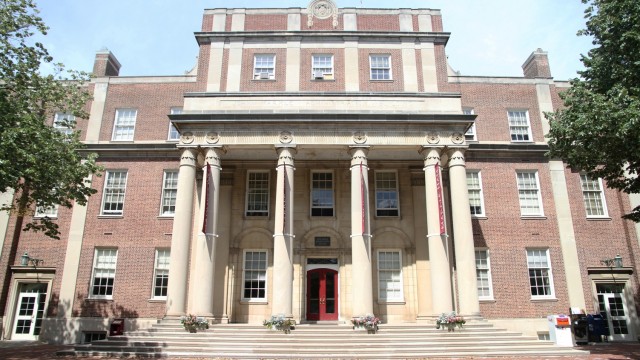In the midst of the pandemic, and as one of several cost-cutting measures, Lafayette College furloughed a total of 35 staff members between June and July this summer. The majority of these staff members have since returned either part-time or full-time.
The college does not anticipate more furloughs at this time.
Some staff members were furloughed full-time, meaning that they did not work for the college, while other members were partially furloughed, which means that they worked significantly decreased hours that can range from a couple of days a week to one week a month.
“The furloughing process was something that the college took very seriously and did very carefully,” said Alma Scott-Buczak, associate vice president for human resources. “I was involved in designing the process we would do to identify whether or not there were any opportunities to furlough. Understanding what the impact of that would be on our employees and our business and then working with the leadership team, the cabinet, to figure out the specific furloughs they would do by division.”
The president’s cabinet, which consists of the heads of a variety of departments, spearheaded this process. There are 11 cabinet members who are considered a part of this leadership team who meet periodically with President Alison Byerly to determine the direction of the college.
“In terms of deciding whether employee A gets furloughed or employee B gets furloughed, that’s done at the divisional level because they know their people best and they know which positions they can furlough,” Scott-Buczak said.
When the cabinet began this process, there was a set of guidelines for the department heads to consider when identifying potential employees to furlough, and if they could furlough them.
“What departments came up with was based on their business and their business needs,” Scott-Buczak said. “If a department did do a furlough, they were all rolled up to a college-wide analysis to make sure that the furloughs were going to save the amount of money that the college was trying to target.”
There was no requirement for each department to furlough a certain number of employees and was viewed as a way in which the college could cut expenses during a time of financial struggle.
“Some departments furloughed a number of people, other departments only furloughed one or two, and it was all based on the work they had to do in the department,” Scott-Buczak said.
One staff member still furloughed as part of the ongoing budgetary restrictions is Campus Energy Manager Nick DeSalvo of the Sustainability Department. DeSalvo’s furloughing was concurrent with Kendall Roberson, the Sustainability Fellow, leaving the department. Currently, the only staff members employed in the Office of Sustainability are Delicia Nahman, the Sustainability Director, and Lisa Miskelly, the Assistant Director of Food & Farm.
“[DeSalvo] was largely in charge of helping to continue to create some strategy around the implementation of the Climate Action Plan,” Nahman said. “That meant prioritizing our energy conservation projects that were going to be spent out of the green revolving fund, helping to track some of the data that was coming out of those projects, doing a lot of the measurement and verification data capture and analysis.”
DeSalvo held many roles within the department and was involved in academic engagement, where he was asked to engage with utilizing the campus as a living laboratory, as well as to facilitate the renewable energy contract negotiations.
“My understanding is that because there was a budget freeze and the green revolving loan was one of the areas where the college felt there was an opportunity to hold that cash in the short term, it meant that the energy managers core role in facilitating the spending of that money and the measurement and verification around the projects that the money is spent on was one reason that [DeSalvo] rose to the to the top of the list,” Nahman said.
Scott-Buczak explained that the college is not planning for other furloughs.
“[We] have to keep our eye on what’s going on with the college and with our expenses and finances, and it is possible down the road that we’ll have to consider them but right now, we’re not looking at doing other furloughs,” Scott-Buczak said.
The college’s decisions for staffing and funding were directed towards maintaining a clean and healthy campus, Nahman added.
“I feel that while they’re trying to keep Lafayette financially strong, they also want to make sure that staff are feeling heard and are feeling like there’s as much of a work-life balance as is possible,” Nahman said.



























































































































